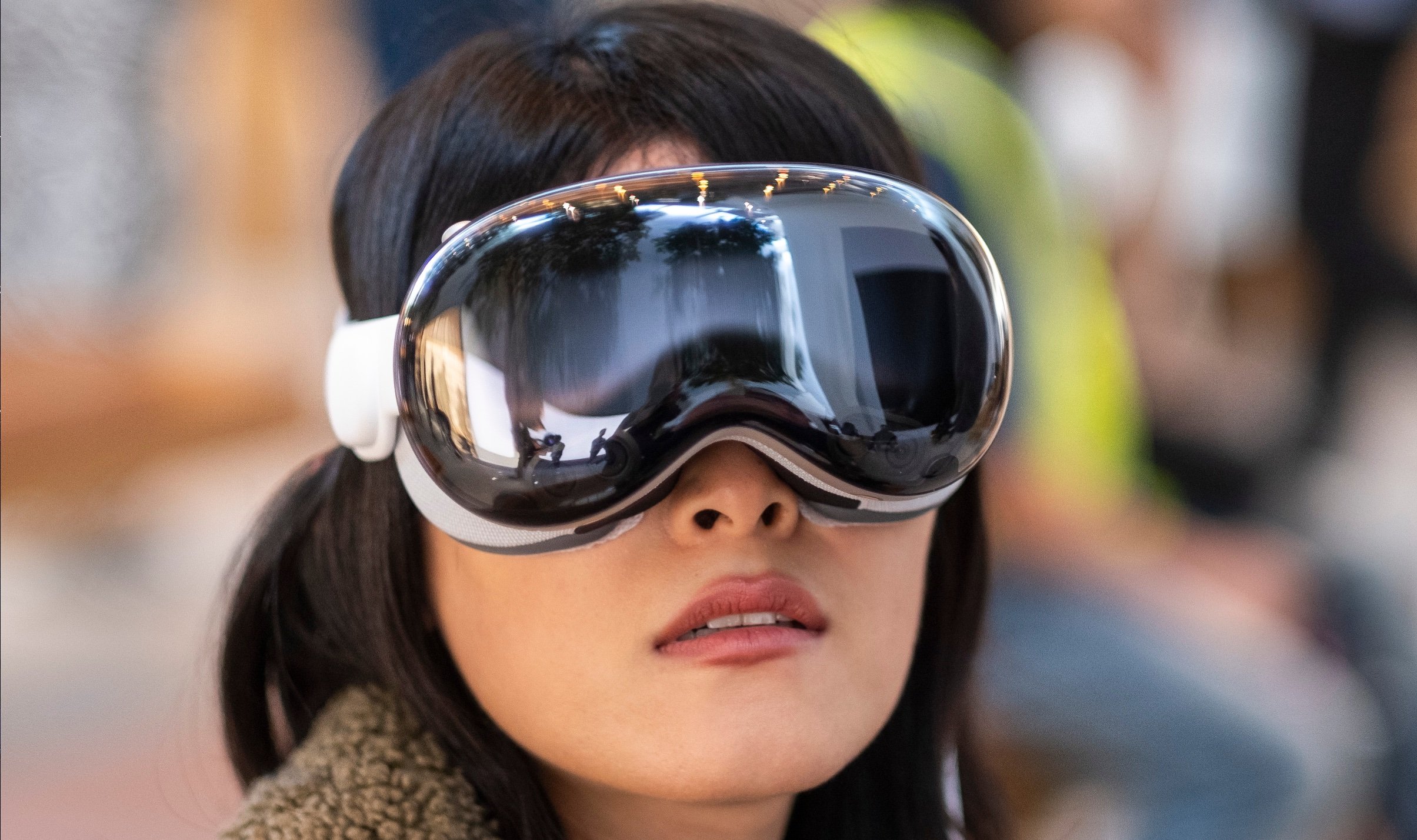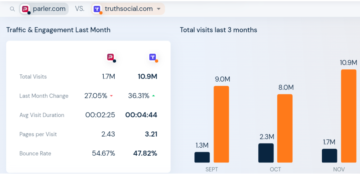
Early adopters of Apple mixed reality headsets are complaining that the gadget is literally a “pain in the neck,” although they still love them.
Some users have indicated how the headset is not comfortable, causing headaches, backaches, neck pain, and eye discomfort. Others have complained about the weight of the gadget.
Painfully delivering spatial computing
Apple introduced the Vision Pro in June last year, which was argued to be its most significant hardware in 10 years.
The product, according to the company should “deliver spatial computing,” as well as bring “a new dimension to powerful personal technology.”
However, Emily Olman, who got her gadget in February for $3,500 does not have a very beautiful story share about the device.
The Kensington, Kalif-based Olman, who is a chief media officer at Hopscotch Interactive told MarketWatch that she developed black eyes after wearing the device for the first time for about an hour.
“I wasn’t able to use it very much the first few weeks because the fit was just off,” she said.
Olman who uses the device to create videos for commercial and residential real-state clients added that she had “super-dark black eyes,” after wearing the Apple Vision Pro, which “clearly (placed) too much weight on my cheeks.”
Also read: Google and Intel Launch Own AI Chips as Nvidia Rivalry Heats Up
Pain that cuts across
Olman is not the only one troubled by using the VR device. Another user, Ian Beacraft who is the CEO of a consulting firm Signal and Cipher said he felt “soreness at the base of his skull and in his upper back after a two-hour session.” According to MarketWatch, he blamed the challenge on the Apple gadget.
A New Jersey-based plastic surgeon, Dr Zuhaib Ibrahim explained that he experiences headaches after more than two hours on AR/VR headsets while carrying out procedures in the operating room.
“You need to take a break,” he said.
Other users have also taken to social media platforms like Reddit complaining of discomfort and the side effects of using the device, for instance puffy or dry eyes, dark under-eye circles “resembling black eyes.” Other users however feel those complaining is “their fault” and should have opted for the $599 tilt adjustable strap.
But for Wistia CEO Chris Savage, it took him a few days to adjust to the headset.
“People are trying to figure it out, but that’s part of my job as an early adopter of technology,” he said in an interview.
“It’s not nearly as comfortable as I expected. Ultimately, I dialed up the fit, which took a couple of days, and [then] it was fine. Initially I felt it on the front of my face. The band was too tight.”
The warnings
Although the Apple Vision Pro has received good reviews, it also comes with a warning: “Wearing it for extended periods of time – more than an hour or so – risks neck pain, headaches, eye strain and back aches,” according to users of the device and Apple Literature.
“You are wearing a computer strapped to your face,” said Jeremy Bailenson who studies virtual reality at Stanford University.
Bailenson recently published a study on the psychological effects of passthrough video usage in mixed reality. According to Morningstar, passthrough is a “feature that lets users step outside their view in VR to glimpse a real-time view of their surroundings.”
Bailenson also warned that overuse of headsets including those from Apple, “could lead to temporary general discomfort, distraction from the real world and ‘simulator sickness,’ which is akin to motion sickness.”
The iPhone maker also provides some guidelines for its Vision Pro or AVP usage.
One such warning reads: “As you become acclimated to using your Vision Pro, take a break every 20 to 30 minutes, then adjust the time based on your comfort level.”
Additionally, the company encourages users to stop using the devices once they experience discomfort adding that: “If symptoms persist, consult your medical provider.”
- SEO Powered Content & PR Distribution. Get Amplified Today.
- PlatoData.Network Vertical Generative Ai. Empower Yourself. Access Here.
- PlatoAiStream. Web3 Intelligence. Knowledge Amplified. Access Here.
- PlatoESG. Carbon, CleanTech, Energy, Environment, Solar, Waste Management. Access Here.
- PlatoHealth. Biotech and Clinical Trials Intelligence. Access Here.
- Source: https://metanews.com/apple-vision-pro-headset-a-pain-in-the-neck/
- :has
- :is
- :not
- $3
- $UP
- 10
- 20
- 30
- 500
- 7
- a
- Able
- About
- According
- added
- adding
- adjust
- adjustable
- adopters
- After
- AI
- akin
- also
- Although
- an
- and
- Another
- Apple
- apple mixed reality
- AR/VR
- ARE
- argued
- AS
- At
- back
- BAND
- base
- based
- BE
- beautiful
- because
- become
- Black
- Break
- bring
- but
- by
- carrying
- causing
- ceo
- challenge
- chief
- Chips
- Chris
- cipher
- circles
- clients
- comes
- comfort
- comfortable
- commercial
- company
- computer
- computing
- consult
- consulting
- Couple
- create
- cuts
- Dark
- Days
- delivering
- developed
- device
- Devices
- Dimension
- does
- dr
- dry
- Early
- effects
- encourages
- Every
- expected
- experience
- Experiences
- explained
- extended
- eye
- Eyes
- Face
- February
- feel
- felt
- few
- Figure
- fine
- Firm
- First
- first time
- fit
- For
- from
- front
- General
- Glimpse
- good
- got
- had
- Hardware
- Have
- he
- headaches
- Headset
- headsets
- her
- him
- his
- hour
- HOURS
- How
- However
- HTTPS
- i
- in
- Including
- indicated
- initially
- instance
- Intel
- interactive
- Interview
- introduced
- iPhone
- IT
- ITS
- jeremy
- Job
- jpeg
- june
- just
- Last
- Last Year
- launch
- lead
- Lets
- Level
- like
- literature
- love
- macrumors
- maker
- MARKETWATCH
- Media
- medical
- Minutes
- mixed
- mixed reality
- more
- Morningstar
- most
- motion
- much
- my
- nearly
- Need
- New
- Nvidia
- of
- off
- Officer
- on
- once
- ONE
- only
- operating
- or
- Other
- Others
- out
- outside
- own
- Pain
- part
- passthrough
- periods
- personal
- plastic
- plato
- Plato Data Intelligence
- PlatoData
- powerful
- Pro
- procedures
- Product
- provider
- provides
- psychological
- published
- Read
- real
- real world
- real-time
- Reality
- received
- recently
- residential
- Reviews
- risks
- rivalry
- Room
- Said
- session
- Share
- she
- should
- side
- Signal
- significant
- So
- some
- Spatial
- spatial computing
- stanford
- Stanford university
- Step
- Still
- Stop
- Story
- studies
- Study
- such
- surgeon
- Symptoms
- Take
- taken
- Technology
- temporary
- than
- that
- The
- their
- Them
- then
- they
- those
- time
- to
- told
- too
- took
- trying
- two
- Ultimately
- university
- Usage
- use
- User
- users
- uses
- using
- very
- Video
- Videos
- View
- Virtual
- Virtual reality
- vision
- vr
- warned
- warning
- was
- Weeks
- weight
- WELL
- which
- while
- WHO
- with
- world
- year
- years
- You
- Your
- zephyrnet













